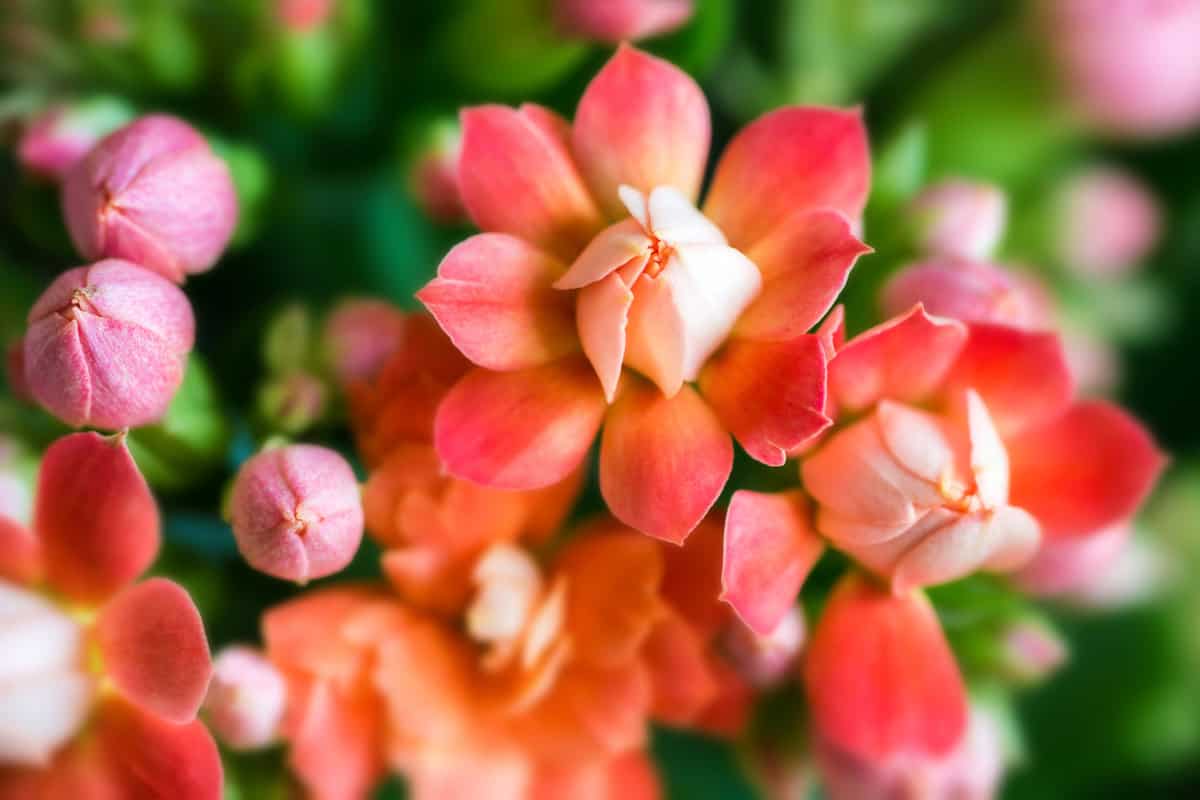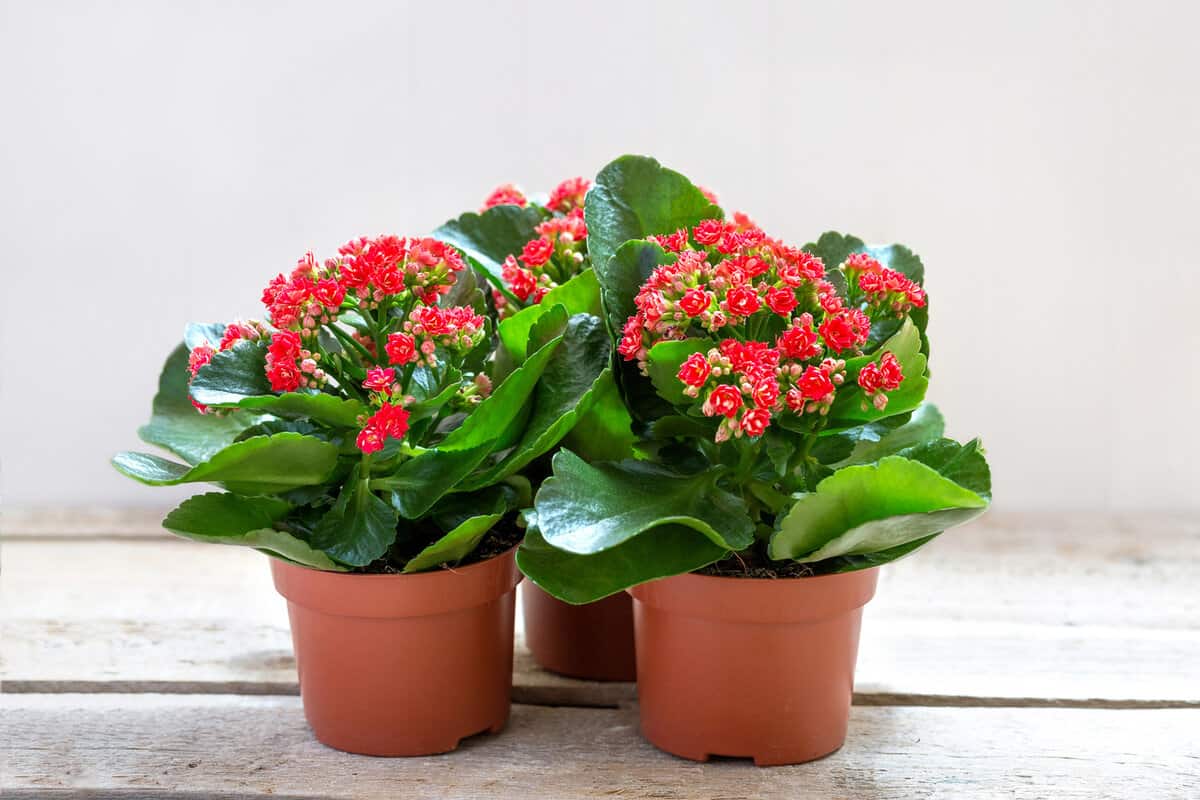Kalanchoe make your garden attractive with beautiful leaves and flowers. But how do you overwinter a kalanchoe? Does it affect the quality of the kalanchoe? What are some things to think about? We've researched these questions and have answers.
Winter is a difficult season for small houseplants like kalanchoe that cannot withstand absorbing too much moisture. Overwintering helps plants like kalanchoe to live during and after the winter season.
Your kalanchoe will survive the winter if you follow the steps below:
- Relocate the kalanchoe.
- Provide what kalanchoe needs.
- Avoid cold air drafts.
- Prune the kalanchoe.
- Nourish for regrowth.
This article will provide useful information on how to overwinter a kalanchoe. You'll learn its importance and effects. Also, we'll discuss more relevant things you should know regarding kalanchoe. So keep on reading!

How to Overwinter Kalanchoe

Kalanchoe is a houseplant that is common in Madagascar and tropical areas of Africa. Kalanchoe looks attractive and has a lot of flowers, which make it popular as a decoration. It's great for putting in small pots and hanging around the front porch.
People also love to place it near the window, on a tabletop, or even among the bushes in the yard.
The term overwintering pertains to prolonging something and allowing it to survive over an entire winter season.
Overwintering a Kalanchoe means you're putting it in a safer place away from too much moisture or cold temperatures. This will help Kalanchoe endure the winter season until it's over.
You can follow the steps below to overwinter your kalanchoe.
1. Relocate the kalanchoe
A Kalanchoe prefers direct and bright light.You can consider relocating it to a better spot, like a window. It's important for kalanchoe to gain enough energy.
Kalanchoe can withstand a temperature as low as 45 degrees Fahrenheit. However, it's ideal to keep the temperature between 65 and 85 degrees Fahrenheit.
Also, consider placing the kalanchoe away from the reach of children and pets. This is to protect the plant, as well as your children, from swallowing tiny parts that can result in a choking hazard.

2. Provide what the kalanchoe needs
Aside from natural light and temperature, you should provide other things your plant needs, like a pot, soil, and water. It's ideal to use peat moss and perlite of about 60 and 40 percent, respectively.
Peat moss is an organically decomposed fibrous material that can be found in cold wetlands. Peat moss is quite acidic, which helps in growing some plants like azalea. Also, peat moss is sterile, which keeps parasites away from the plant.
On the other hand, perlite comes from a volcanic glass that is heated to a high temperature. It's an inorganic material that is efficient in storing moisture for plant roots.
Perlite also allows air to pass through it, which prevents the soil from being compact and hard. Perlite is being mined in some states, like Arizona and California.
By mixing peat moss and perlite, the quality of the soil will be good enough for kalanchoe. Your kalanchoe can have enhanced sterility while keeping the soil soft with sufficient water and oxygen.
You can use a pot that is 4-6 inches wide and not deeper than 6 inches. There should be holes beneath the pot so that it can drain excess water.
The water should then be caught by a tray or smaller saucer. It's easy to overwater kalanchoe. So remember that you can have an interval of watering it for 8–10 days.
3. Avoid cold cir drafts
If you have an AC at home, then put the kalanchoe in a place far from cold drafts. Cold temperatures can block the nutrients and water from passing through the stems. Since cold air drafts can create moisture, they interrupt the growth of a plant.
Winter is quite a disaster for houseplants, as they get less exposure to sunlight. If the temperature falls below 50 degrees Fahrenheit, the plants may suffer damage. You can consider pausing watering indoor plants and keeping the room temperature warm.
Also, try closing the curtains or turning on your furnace. The warm temperature helps relieve indoor plants from excessive moisture, but you don't want to exceed 90 degrees Fahrenheit, as this can be harmful to your plants.
4. Prune the kalanchoe
Pruning means removing some parts of a plant that can interfere with its growth or blooming process. The kalanchoe need to stay healthy by cutting out unhealthy stems and leaves.
You can use shears to easily cut plants. It's not good to use regular scissors, as some stems are too hard for them.
See this garden shear on Amazon.
Simply follow the steps below:
- Remove the dying stems that have turned dark brown. Ignoring them can harm the whole plant.
- Cut the flower stalks to allow the leaves to have more space for growing.
- Cut off the dead leaves or those that are torn and discolored.
You may need to wait for kalanchoe to complete the blooming stage, which takes at least a year. When kalanchoe grow again, cut the flower stems and leaves that have exceeded one-third of the plant.
This is to allow reblooming and to keep kalanchoe healthy for the longest time possible.
5. Nourish for regrowth
Kalanchoe can regrow under proper care and nourishment. It usually takes six weeks of winter before you can see flower buds forming. You can place kalanchoe in a dark area, like inside a closet, during winter to allow flowers to regenerate.
It typically takes eight weeks for kalanchoe flowers to bloom. However, there's a way to make kalanchoe bloom faster. Try putting them in a box for 14 hours a day, then letting them out to absorb light for 10 hours.
For at least six weeks without watering, do this trick. As long as you see a flower bud starting to bloom, put it back under the bright light and continue watering regularly.
Do Kalanchoe Need Fertilizer?

You can fertilize kalanchoe at least once a month using an organic fertilizer with 20% nitrogen, 20% phosporus, and 20% potassium. This can enhance the growth of kalanchoe and its leaves with a lot of soil nutrients.
See this fertilizer on Amazon.
Natural compost can also be used as fertilizer. Just be sure to remove some non-biodegradable waste to prevent kalanchoe from dying due to dissolving toxic components.
How Tall Can Kalanchoe Grow?
On average, kalanchoe can grow to around 8–12 inches tall. You don't want to overgrow your kalanchoe—it might lose its appeal.
Overgrowing kalanchoe can also soften its stems and make the flowers fall off easily. Monitor the watering schedule to prevent overgrowing kalanchoe.
How Long Do Kalanchoe Live?
With continuous nourishment, kalanchoe can last for up to seven years. However, its roots can outgrow the pot. You'll have to get a new pot for the kalanchoe.
Can Kalanchoe Survive Summer?

Kalanchoe love a lot of sunlight and indirect bright light. It can survive the summer season. However, you should not overexpose kalanchoe to sunlight. It can make the leaves too dry, and the roots may lose moisture.
It's ideal not to exceed two hours of sun exposure so that kalanchoe can save energy when you put it back in a shady place.
Is Kalanchoe Poisonous?
Kalanchoe contain a sticky sap coming from the leaves or flowers. This sap can make pets feel nauseous or even have heart problems, considering that food intake impacts pets and humans differently.
However, some studies claim that kalanchoe can cure mild headaches, stress, and anxiety.
Drinking kalanchoe juice can be beneficial in treating fever, nausea, and skin infection. But it's not recommended to drink it without consulting your doctor. Never try it without talking to a doctor for your safety.
Summing Up
This article really covered a lot. of information related to kalanchoe. We learned how to overwinter the plant by giving it enough light, pruning, and more. We also learned that fertilizer can improve its quality.
We briefly discussed how tall kalanchoe can grow and how long it can live. Keep in mind that overgrowing is similar to letting your plant die. Just provide essential care for kalanchoe to bloom properly.
We also learned that kalanchoe can be harmful for pets, yet some studies claim that kalanchoe can be medicinal for humans. Remember to consult a doctor before drinking its juice.
Looking for more to read? You can visit our useful articles here:
What To Plant Under The Eaves Of Your House
Should You Cut The Flowers Off Laurel? [When And How To Deadhead]


